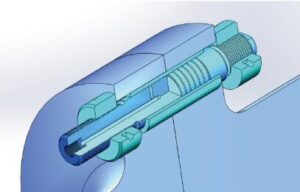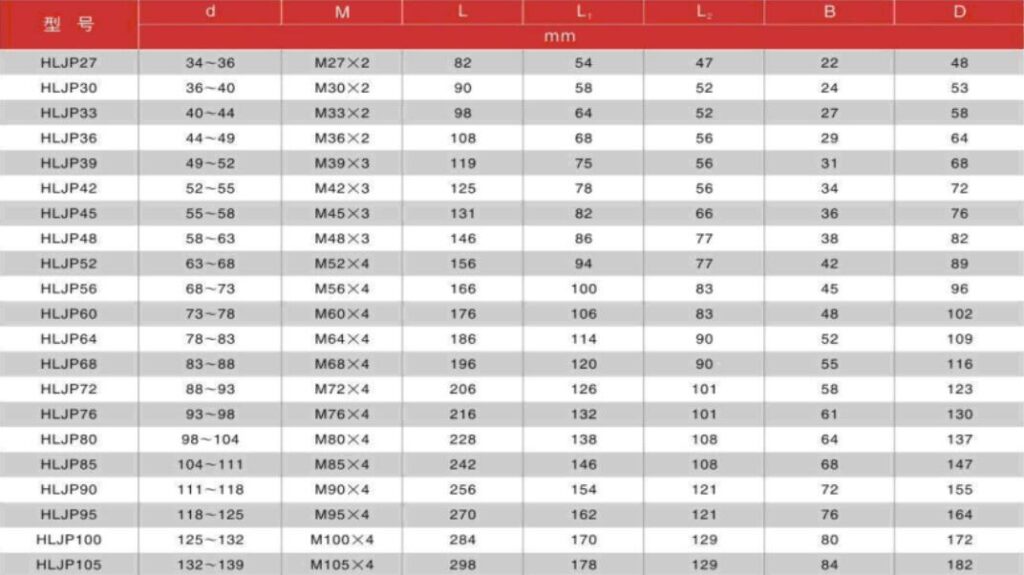Hydraulic bolts
1. Introduction
Hydraulic bolt is composed of a stud with outer taper, a sleeve with inner taper and two nuts. The outer diameter of the sleeve is smaller than the bolt hole of flange to ensure that the stud together with the sleeve can easily pass the bolt hole, and after pull the stud moving in the sleeve by the taper, the sleeve will expand slowly to ensure a tight fit, and then screw the nut, using the friction between the nut and the flange surface, and the shear force between the bolt hole and the hydraulic bolt to transfer torque. After the axial oil pressure is applied, the bolt will restored, and the outer diameter of the bolt sleeve will shrink to the original machined size.
2. Working principle
Make sure of the same taper between the sleeve inner surface and the bolt outer surface. Inject high pressure oil between its taper, use hydraulic stretchers to stretch the bolt. So that the bushing expansion until the bushing outer circle and the gap between the flanges hole to eliminate, to achieve the outer diameter of the bush with the purpose of the flange hole fit.
3. Advantages
- It is easy to install and remove it by hydraulic tension instead of traditional knocking or cold contraction. After removing it, its tapped bolt stem, inner and outer round of middle sleeve and inner hole in shaft coupling keep their original surface roughness. So they can be used repeatedly.
- Requirements of bolt hole dimension tolerance and surface machined roughness is not high. Bolts need not preciously fit with hole, make bolt hole machining convenient.
- Because the gap between sleeve outer diameter and bolt hole, it is easy to put it in the holes by hand, on the contrary, also easy to remove it from the holes to avoid gripping.
- It simplifies the alignment of shaft and can control the sleeve expansion, so the concentricity between flanges recovers quickly.
- Hydraulic bolts can bear the toque, and also depends on the pressure between the two flanges, hydraulic bolts can transfer torque. The connection is liable and assures equipment running normally.
4. Diagram


5. Specifications

All the above product parameters can be referred to by the design institute and yard. If there is any difference, the technical agreement signed by both parties shall prevail.
